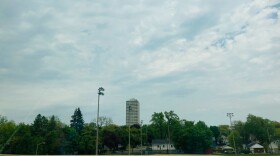Art is a very human way to explore and reflect the world we experience. It often asks questions of us who view or hear it and it can be calming or unsettling. The art itself can be kinetic or static; it can aural or visual or both. But what it usually isn’t, is living.
"BioArt is a contemporary art practice that uses living matter as its medium. So things like animal, plant, human cells and tissues, organisms, bacteria...stuff like that," explains UWM Contemporary Art associate professor Jennifer Johung.
The practice of BioArt uses materials that are created every day in scientific laboratories all over the world to create what are essentially living works of art. The philosophical and ethical questions the practice raises are thorny and profound.
However, Johung believes that BioArt serves as a uniting element between scientists and artists, not a divide. Together, both practices are answers questions about the concept of life through different processes.
"There just isn't a huge divide between artists and scientists when you're thinking about things like what's our new definition of life, or how are we expanding what we qualify as living? What do we want our life to look like?...Those are questions that everybody is thinking about, we're just using different tools," Johung says.
BioArt is a relatively new way of displaying artwork, and Johung is on the forefront of scholarly study on the subject. Having co-curated an exhibition of BioArt in Australia that opened earlier this month, Johung has seen firsthand the reactions of both scientists and the public in the use of living material to create art that has to be created, cared for, and eventually killed.
Johung believes that artists contribute a "wider, messier, squishier context" to the sciences, and that this is only the beginning of further exploration.
"What happens is that artists are just starting to go, 'Oh my god, this is just the beginning. Think of what I can do with these living materials, and think how provoking that could be," she says.






